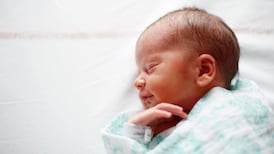More than 1,000 babies and toddlers were listed as homeless on the night of the last census in a finding that raises concern over “developmental delays and distress” among children impacted by the housing crisis.
Homelessness among children has “definitely increased” since the April 2022 census “when we see the number coming to us in our services now”, says Laura Power, services manager at children’s charity ISPCC.
The census recorded the number people of spending the night in either accommodation designated by the State for homeless people, or rough sleeping. It showed 1,179 children in the age category up to four years of age listed as homeless at that time.
In the age category of those aged between five and nine, 854 children were listed as homeless at that time, while 709 children aged 10 to 14 were homeless, as were 567 aged 15 to 19, according to a report by the Central Statistics Office (CSO).
READ MORE
“When we look at that zero to four age category alone, those children will be starting school now and there’s going to be developmental delays and distress... I think we’ll be seeing the impact of this for generations,” Ms Power said.
“You can envision the limitations that living in a hotel room would place on a baby or a toddler,” she said, such as “a baby trying to learn to walk or crawl in such a confined space”.
For children of school-going age, homelessness impacted their ability to build friendships, as they “don’t have the same opportunities” as others their age, such as hosting play dates.
The highest proportion of adults listed as homeless on census night in 2022 were the 30-34 and 35-39 age categories, both listing 988 as homeless at that time.
The Department of Housing releases a monthly report on the number of homeless people in the country, with the latest released in March 2024, showing a total of 9,719 homeless adults.
Although the census figures are not up to date, the census report is the only such report offering a breakdown of specific age categories affected by homelessness. The publication also summarises key aspects of this population, including age profile, country of citizenship, economic status and general health.
The Ombudsman for Children, Dr Niall Muldoon, said it was “evident from statistics like these that the housing and homelessness crisis continues to devastate and disrupt the lives of children across Ireland today”.
The latest official homeless figures show there are more than 4,000 children in emergency accommodation.
But there were “at least 30,000″ children in Ireland in transient and insecure accommodation, he said, when children in direct provision and those “hidden homeless” families leaning on friends and relatives for a roof over their heads were taken into account.
“This lack of security and stability has a devastating effect on a child’s life and is something that we as a society cannot stand over, especially given Ireland’s status as a wealthy nation,” Dr Muldoon said.
There were 10,321 people counted as homeless in Census 2022. The homeless population was generally younger on average than the State population, with variations among different age groups and by sex.
Just over 60 per cent (6,234) of the homeless population was male, whereas 4,087 homeless people were women. In contrast, 51 of the State population was women, the results showed.
Just under one-third (3,309) of homeless people were aged under 20. Among these younger people, 52 per cent were male and 48 per cent women.
In the general population, 26 per cent of people were aged under 20, and there were 3,020 young people aged up to 17 years among the homeless population. A further 64 per cent of the homeless population was aged between 20 and 59 years.
Only 4 per cent of the homeless population (417 people) was aged 60 years and over.
More than two-thirds (7,238) of the homeless population was in the Dublin region at the time. The next highest concentrations of people were in the southwest (7 per cent) and the mideast (6 per cent).
The northwest recorded the lowest percentage of homeless people at 1 per cent of the total.
A report from the Housing Commission earlier this week has called for a large ramping up of the State’s involvement in the housing sector, arguing a State “funding anchor” is needed for fundamental and systemic failings in the market to be addressed.
New legislation, a new oversight body for housing, an expanded role for the State in funding housing, and overhauling of subsidies and schemes are among the recommendations from the Housing Commission’s report.
It suggests there is an underlying housing deficit in Ireland of up to 256,000 homes.
- Sign up for push alerts and have the best news, analysis and comment delivered directly to your phone
- Join The Irish Times on WhatsApp and stay up to date
- Listen to our Inside Politics podcast for the best political chat and analysis










